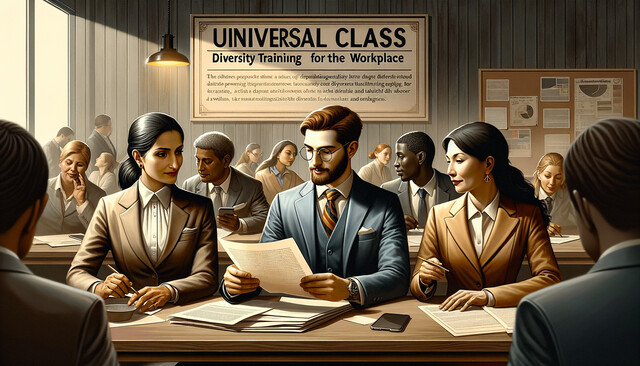Workplace health is just as important as safety. The two go hand in hand when it comes to having a safe workplace. Each year billions of dollars are lost due to people being ill. There are a number of things that can contribute to poor workplace health. Many are the result of the cold and flu being spread around the office by employees who attend work feeling under the weather. In this article, we will look at some things that can affect employee health and what can be done about them.
| Perfume in the Workplace |
While some people may like the various scents of perfumes, others may detest it, or have unfavorable reactions to it. Today's perfumes, unlike those in earlier times that were made from natural scents, are derived from chemicals. In fact, one perfume may have several hundred chemicals that were used to create the final product. These chemicals that the person is wearing may have health implications for those around them who are having to breathe it in all day. According to the Canada Safety Council, the chemicals in fragrances can cause health problems, such as headaches, migraines, nausea,shortness of breath, muscle pain, and even cold-like symptoms. If you have several people in your office, there is a good chance that someone may have a reaction to the fragrances.
Because of this, many workplaces have taken a stance on wearing perfume to work. If it isn't a big problem, you can implement a policy of asking people to tone it down some. If someone in the office is having an adverse reaction, it is in your best interest as the employer to address the problem by implementing a company-wide policy against fragrances in the workplace. If you don't, and you have an employee that has noted the problem, it could lead to a lawsuit.
Did you know?
Some people are winning lawsuits over employers allowing perfume in the workplace after they have reported having reactions to it.
| Blood borne Pathogens |
The U.S. Department of Labor offers a thorough outlook on the subject, along with prevention and what should be done if exposed.
| The Flu, Cold and Hygiene |
The flu (influenza) can cause mild to severe illness and, in some cases, death. It is a highly contagious respiratory illness that is caused by influenza viruses. Up to 20 percent of the U.S. population gets the flu each year, and more than 200,000 people are hospitalized from its complications. The Centers for Disease Control and Prevention reports that the best way to prevent getting it is through a flu vaccine. Additionally, around 36,000 people die from the flu each year.
Common flu symptoms include:
- Headache
- Tiredness
- Sore throat
- High fever
- Runny or stuffy nose
- Diarrhea and/or vomiting
- Body aches
How the flu spreads is very important to workplace health. Many people will get sick and not want to take time off of work. So they go in and end up spreading the virus to their co-workers. It usually spreads from person to person through respiratory droplets. This happens when people sneeze or cough. Occasionally people can become infected by touching something that has the germs and then touching their eyes, nose or, mouth. When people sneeze or cough, those droplets spread in the air and then someone else may unsuspectingly breathe it in and then also become sick. Typically, a healthy adult can infect others with it one day before even getting the symptoms, and up to five days after being sick. This big window of opportunity helps to spread it around before someone even knows they are sick, and after they think it is gone.
The common cold is much like the flu, only the symptoms are not usually as strong. They are both respiratory illnesses, but are both caused by different viruses. The cold is usually much more mild than the flu, and those with a cold usually have a runny or stuffy nose. Unlike the flu, colds are not usually serious. Most adults will have two to four colds per year and typically recover in a week or two. There is no cure for the common cold, it is just something that takes time to pass. Around 200 viruses can cause the common cold, usually being the rhino virus. The cold is also very contagious and is spread in the same manner as the flu, but it also easily can be spread through hand-to-hand contact, sharing objects, touching things, and then touching the eyes, nose, or mouth afterward.
So far we have discussed many of the common workplace safety issues that can lead to illness and injury; we also have looked at some ways that these problems can be prevented. One of the main things that a company needs to be concerned with is prevention. If you are proactive and take measures to try to prevent the problems from happening in the first place you will at the very least minimize workplace injuries and illnesses. Prevention should be the goal of every business, followed up by how to handle a situation should it occur. In this lesson, we will look at the different ways you can help prevent bad situations from occurring in the workplace.
| Preventing Falls |
|
Employees falling, slipping, or tripping on the job is a big cause for concern. The National AG Safety Database out of the University of Florida reports that each year there are nearly 4 million disabling injuries in the workforce, and around 15 percent of them are due to falling, slipping, or tripping. It also accounts for up to 15 percent of all Workers' Compensation costs. Additionally, it can be quite dangerous. For example, in the year 1999 alone there were about 5,100 workers who died from falling. Many of injuries take place in the construction trades, and the most frequently injured body part is the back. |
To help prevent falls in the workplace, it is important to:
o Provide a safe work environment that is free of clutter in the walking areas. Good housekeeping and proper lighting is essential. Some businesses find it helpful to paint yellow lines on the ground to identify walking areas.
o Employees should be cautioned against carrying items too large for them to comfortably maneuver, or to see where they are going.
o All workers should be aware of the proper type of shoes they should be wearing for their position. Wearing improper shoes for a job can lead to slips and falls.
o Those using ladders should exercise caution in making sure they are setting them up correctly. When using a ladder, it should be set at or near a 4:1 angle. What this means is that for every three to four feet of rise, the base should be one foot back.
o Those working around tractors, trucks, and other such equipment need to follow precautions when it comes to entering and riding in only the designated areas on the equipment.
o Stair wells should have railings and be free of debris and clutter. Also, loading docks should have a skid-resistant surface and be cleaned and maintained.
Did you know?
The National Safety Council reports that each year there are around 110,000 injuries to the toes and feet of workers in the U.S. Depending on the workplace setting, proper shoe and boot requirements will vary. Employers will need to identify what the proper type is for their employees and inform them of it, along with how to pick out the proper shoe for their position.
| Forming a Safety Committee |
One way to make safety a priority in your business is to form a safety committee. A workplace safety committee will be a group of employees that is designated to make safety something they meet on to discuss, plan, and evaluate. Through the committee, they should do the following:
- Identify safety issues that are a priority for that work setting.
- Make plans to address those concerns, as well as provide preventative measures.
- Create emergency plans for the workplace.
- Set safety-standard goals and evaluate if those goals have been met.
- Implement training or education programs for staff so they are aware of the safety procedures and goals.
- Place proper signage throughout the work site to remind workers of safety habits.
- Ensure that the signage has been addressed in multiple languages if necessary.
- Motivate employees to keep safety a high priority (e.g., offering incentives, playing safety bingo, etc).
- Hold regularly scheduled meetings to keep workplace safety a priority.
- Acknowledge workers for their efforts in following good safety guidelines.
So far we have discussed many of the common workplace safety issues that can lead to illness and injury; we also have looked at some ways that these problems can be prevented. One of the main things that a company needs to be concerned with is prevention. If you are proactive and take measures to try to prevent the problems from happening in the first place you will at the very least minimize workplace injuries and illnesses. Prevention should be the goal of every business, followed up by how to handle a situation should it occur. In this article, we will look at the different ways you can help prevent bad situations from occurring in the workplace.
| Preventing Falls |
|
Employees falling, slipping, or tripping on the job is a big cause for concern. The National AG Safety Database out of the University of Florida reports that each year there are nearly 4 million disabling injuries in the workforce, and around 15 percent of them are due to falling, slipping, or tripping. It also accounts for up to 15 percent of all Workers' Compensation costs. Additionally, it can be quite dangerous. For example, in the year 1999 alone there were about 5,100 workers who died from falling. Many of injuries take place in the construction trades, and the most frequently injured body part is the back. |
To help prevent falls in the workplace, it is important to:
o Provide a safe work environment that is free of clutter in the walking areas. Good housekeeping and proper lighting is essential. Some businesses find it helpful to paint yellow lines on the ground to identify walking areas.
o Employees should be cautioned against carrying items too large for them to comfortably maneuver, or to see where they are going.
o All workers should be aware of the proper type of shoes they should be wearing for their position. Wearing improper shoes for a job can lead to slips and falls.
o Those using ladders should exercise caution in making sure they are setting them up correctly. When using a ladder, it should be set at or near a 4:1 angle. What this means is that for every three to four feet of rise, the base should be one foot back.
o Those working around tractors, trucks, and other such equipment need to follow precautions when it comes to entering and riding in only the designated areas on the equipment.
o Stair wells should have railings and be free of debris and clutter. Also, loading docks should have a skid-resistant surface and be cleaned and maintained.
Did you know?
The National Safety Council reports that each year there are around 110,000 injuries to the toes and feet of workers in the U.S. Depending on the workplace setting, proper shoe and boot requirements will vary. Employers will need to identify what the proper type is for their employees and inform them of it, along with how to pick out the proper shoe for their position.
| Forming a Safety Committee |
One way to make safety a priority in your business is to form a safety committee. A workplace safety committee will be a group of employees that is designated to make safety something they meet on to discuss, plan, and evaluate. Through the committee, they should do the following:
- Identify safety issues that are a priority for that work setting.
- Make plans to address those concerns, as well as provide preventative measures.
- Create emergency plans for the workplace.
- Set safety-standard goals and evaluate if those goals have been met.
- Implement training or education programs for staff so they are aware of the safety procedures and goals.
- Place proper signage throughout the work site to remind workers of safety habits.
- Ensure that the signage has been addressed in multiple languages if necessary.
- Motivate employees to keep safety a high priority (e.g., offering incentives, playing safety bingo, etc).
- Hold regularly scheduled meetings to keep workplace safety a priority.
- Acknowledge workers for their efforts in following good safety guidelines.































